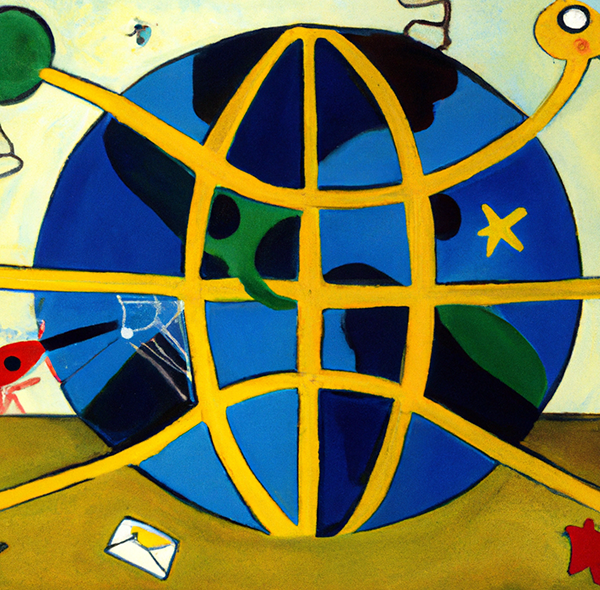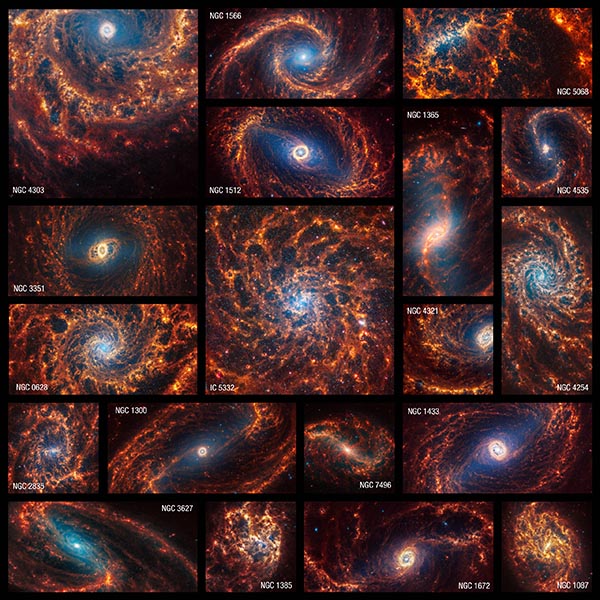
Whole Hog
Happy Groundhog Day (to those who celebrate)! Today is the day where we forgo modern meteorology and take our weather advice from a large rodent. Which of course begs the question: where this this idea even come from, and why does it persist? Mental Floss is on it.
It starts with the fact that February 2—falling halfway between the winter solstice and the spring equinox—is the mid-point of winter and regardless of what le rodent sees, there are another six weeks or so of winter left. Or six months if you live in New York State.
Yet Groundhog Day marks a turning point of the season, and for agricultural communities, midwinter was a time to take stock and determine whether you had enough food and firewood to last until late March.
Or whether you need to make a run to the supermarket.
Ancient pagans marked the solstices and the equinoxes as a way of measuring the cycle of a year. Important dates, considered the real beginnings of the seasons, fell at the midpoint between the solstices and equinoxes.
They also watched nature, and the behavior of animals was often a sign of what to expect.
Cultures around the world, and particularly those in wintry regions of Europe, looked to the emergence of hibernating animals as harbingers of spring. Though the snake mentioned in the old Celtic verses was rarely ever seen (especially in Ireland), mammals were believed to be fairly reliable prognosticators.
For example:
In some parts of Eastern Europe, Candlemas is also known as the day of the bear. Good weather on this day will cause bears to stay outside their dens, meaning spring will come soon. In other places that observe the folk ritual, if the weather is nice, the bear will see his shadow and be frightened back into his den for more winter weather.
You can’t hold a candle to the bear, now can you? Well, in Germany they could.
In Germany, Candlemas is associated with the weather forecasting prowess of badgers (dachs in German). “Dachstag, or Badger Day, is a German folk expression for Candlemas,” writes folklorist Ralph Yoder in his book Groundhog Day. “The belief was […] if the badger encountered sunshine on Candlemas and therefore saw his shadow, he crawled back into his hole to stay for four more weeks, which would be a continuation of winter weather.”
And in France, they had their marmot, while in England they had Marmite. No, wait… sorry, hedgehog. And it was German immigrants to America who brought their traditions with them.
Immigrants from Germany known as the Pennsylvania Dutch brought their Dachstag customs to America in the 18th and 19th centuries. There are no badgers endemic to the eastern U.S., but Marmota monax, popularly known as a whistle-pig, woodchuck, or groundhog, hibernated in the winter and filled the requirements of the old tradition.
The auditions must have been fierce.
At any rate, the first reference to Groundhog Day in the U.S. was made in 1841, in the diary of James Morris of Morgantown, Pa. Which raises another question: are these rodents even accurate? Well, no: “The National Weather Service gives Punxsutawney Phil a 40 percent accuracy rate since 2013.”
Still, we got a classic movie out of it.
Snow Job
Ah, it’s that time of year again, when the Minnesota snowplows emerge from their garages and, if they see their shadows, there will be no more snowstorms for the rest of the winter.
As if.
No, actually, it was the Minnesota Department of Transportation’s annual “Name a Snowplow” contest. Here are this year’s winners:

There was a bit of a controversy when deepfake images of Taylor Drift without a windshield began circulating on the Internet.
Really Wide-Format Printing
Here’s an issue we’re not sure we want to wade into, but we thought it at the very least amusing. At issue: what are the maximum dimensions of a PDF? Via Boing Boing, apparently conventional wisdom says 381 sq. km.—which, with some disappointment, they say is “smaller than Germany.”

Still, that’s a bit larger than the average print trim size. Regardless, is this a myth? And is there a mythology that involves PDF files?
Alex decided to debunk this claim in a post compellingly titled, “Making a PDF that’s larger than Germany.”
It seems that maximum PDF size claims are based on the maximum display capabilities of a PDF reader, specifically Acrobat Reader, not necessarily the format itself. But what if you create a PDF that exceeds those dimensions? Will the universe explode?
Alex does a great deal of digging into and explaining the internal structure of a PDF, but the upshot is that she did in fact create a PDF that was larger than what conventional wisdom says.
If you try to create a page with a larger size, either by increasing the MediaBox or UserUnit values, Acrobat just ignores it. It keeps saying that the size of a page is 15 million inches, even if the page metadata says it’s higher. (And if you increase the UserUnit past 75000, this happens silently – there’s no warning or error to suggest the size of the page is being capped.)
… But unlike Acrobat, the Preview app doesn’t have an upper limit on what we can put in MediaBox. It’s perfectly happy for me to write a width which is a 1 followed by twelve 0s:
If you’re curious, that width is approximately the distance between the Earth and the Moon. I’d have to get my ruler to check, but I’m pretty sure that’s larger than Germany.
You’re still gonna have to tile the output.
I could keep going. And I did. Eventually I ended up with a PDF that Preview claimed is larger than the entire universe – approximately 37 trillion light years square. Admittedly it’s mostly empty space, but so is the universe. If you’d like to play with that PDF, you can get it here.
Now, that’s grand format.
Kingdom of Books
In 1987, R.E.M. sang, “Let’s put our heads together/And start a new country up.” If we were to take that advice to heart, what kind of country would we want to start up? Well, we’d be all in favor of this Welsh “kingdom of books.” Via Atlas Obscura (not made up, we think), in 1962, a Welshman named Richard Booth, who had a passion for books, opened a bookshop in the town of Hay-On-Wye. A few years later, he bought Hay Castle and converted it into an even bigger bookstore—which had even been recognized by Guinness World Records as the world’s largest second-hand bookshop. In 1976, the Welsh Tourism Board listed Hay as a “Town of Books.” And then Booth went off the deep end. Declaring himself king,
Booth raised a new flag at his castle, placed a crown on his head, and fired a cannon from a gunboat (in reality: a small rowing boat) to mark the community’s independence. Although the independence was never officially recognized by the United Kingdom, other micronations supported Booth’s cause to raise awareness to support his community.
He crazy thing is, it worked—after a fashion.
[L]ots of publicity was generated around his declaration of independence. Everyone from journalists to tourists now wanted to visit the self-declared “Kingdom of Books.” In 1999, a university studied the economic efforts of book towns and found a direct correlation between Booth’s stunt and helping the economy not just of Hay, but the entirety of Wales.
The annual Hay Festival was launched in 1988, celebrating literature across 10 days in May and June (damn, that conflicts with drupa).
As for Booth?
he never stopped his eccentricity; he was awarded an MBE in 2004 for his services to tourism. His effigy was also beheaded in the town square by revolutionists as part of a publicity stunt (he and the lead revolutionists remained on good terms afterward). He sold his castle in 2011 to a trust, and in 2022, the castle was opened to the public. Booth sadly passed away in 2019, and his home was turned into a museum about the self-declared King of Hay.
Epaper Late?
We confess, we’ve always had a place in our heart for E Ink, the revolutionary “electronic paper” technology that kicked off the ebook boom (via the Amazon Kindle), before being supplanted by LCD displays. (As recently as 2020 we wrote about E Ink technology being used for signage.)
Recently, The Verge asked, “Is E Ink finally ready for prime time?”
E Ink has come a long, long way in the past few years. Outside of e-readers, there are E Ink tablets, laptops, desktop monitors, signs, dresses, color-changing cars, smartwatches, and a whole gaggle of devices that utilize the tech. You might say that there’s been a bit of an electronic paper renaissance.
There have been advances in traditional E Ink challenges such as contrast, refresh rates, and color, and it’s also become less expensive. But then there are also the traditional advantages that it has had over LCD and OLED: its power efficiency and, being a reflective display—like proper paper—its viewability from multiple angles and in direct sunlight.
Those advantages are reasons why you’re starting to see E Ink show up in some unexpected places, like on a robot dog and in the price tags at your grocery store.
Robot dog? Why, yes:
Color-changing e-paper was applied to a BMW concept car, which made the technology a hit. Later, kitchen brand Kohler applied it to a toilet, which was also refreshing, and now the latest color-changing e-paper has been applied to Xiaomi's newly released robotic dog, which is once again attracting attention.
Check out The Verge’s interview with the folks at E Ink:
Cursive! Foiled Again
Apparently, cursive handwriting is starting to make a comeback, for some reason. Says Reuters:
Starting this year, California grade school students are required to learn cursive handwriting, after the skill had fallen out of fashion in the computer age.
Why?
Experts say learning cursive improves cognitive development, reading comprehension and fine motor skills, among other benefits. Some educators also find value in teaching children to read historic documents and family letters from generations past.
…Some kids complain about the difficulty, to which Keller has a ready answer.
“We tell them, well, it's going to make you smarter, it’s going to make some connections in your brain, and it’s going to help you move to the next level. And then they get excited because students want to be smarter. They want to learn,” Keller said.
Do they? Do they really?
Frankly, these days we’d rather they focus on teaching typing/texting (and proofreading!) skills, so some of us don’t need a secret decoder ring to understand a text or Slack message, which can harder than reading documents from the 18th century.
Now, on the other hand, Talking Cursive is a brewpub in downtown Syracuse, N.Y., which we unhesitatingly endorse.
Three Chairs for 3D Printing!
It’s interesting what the ease of downloading music and movies has done for those industries. What happens to, say, the furniture manufacturing industry when you can print a table or chair right at home? A silly question, perhaps—or is it? 3D printing is now being used in metal manufacturing, to at some point be used in printing at least some components of furniture. Says MIT News:
MIT researchers have developed an additive manufacturing technique that can print rapidly with liquid metal, producing large-scale parts like table legs and chair frames in a matter of minutes.
Their technique, called liquid metal printing (LMP), involves depositing molten aluminum along a predefined path into a bed of tiny glass beads. The aluminum quickly hardens into a 3D structure.
Not to be confused with the (perhaps) more familiar LMP, Literary Marketplace. Choose wisely.

The researchers say LMP is at least 10 times faster than a comparable metal additive manufacturing process, and the procedure to heat and melt the metal is more efficient than some other methods.
The technique does sacrifice resolution for speed and scale. While it can print components that are larger than those typically made with slower additive techniques, and at a lower cost, it cannot achieve high resolutions.
And, let’s face it, there’s nothing worse than a low-resolution chair. But then maybe the “pixelated look” will be the next big trend in interior décor.
For instance, parts produced with LMP would be suitable for some applications in architecture, construction, and industrial design, where components of larger structures often don’t require extremely fine details. It could also be utilized effectively for rapid prototyping with recycled or scrap metal.
I Wandered Lonely as a Desk
Many of us, in our misspent youth, got caught writing or carving our names or other things on school desks. This is nothing new; we suspect the practice has existed as long as there have been desks. But, if you’re lucky and become a famous poet, your errant desk carvings will become a preserved part of the national heritage, as is the case at a grammar school in Hawkshead, U.K., founded 1585. Via Atlas Obscura:
Among its distinguished alumni was the famous poet, William Wordsworth, who attended the school from 1779 to 1787. In adulthood, Wordsworth left an indelible mark on the history of poetry, as a child, however, Wordsworth’s writing left another kind of mark when he carved his name onto one of his school desks.
So, rather than detention, he got this:
This signature remains, protected behind glass, as a visible reminder of his time at the school. The Old Grammar School has now been transformed into a museum that offers visitors a glimpse into its past, including the historic artifact that bears the signature of one of the most celebrated poets of the English language.
We don’t even want to know about the memorial marking where John Keats TP’ed a neighbor’s house.
Three’s a Crowd(fund)
Over at Core 77, a round-up of some of the “good, bad, and weird stuff that was crowdfunded in 2023”—some of which we have covered on Around the Web.
We’ve mentioned the Light-Up Chess Set, but don’t recall the TruRest, which allows users to sleep face-forward on airplanes.

And it looks like you’ll be able to take it with you when you get sucked out of a Boeing 737 Max 9.
We covered Simone Giertz’s Coat Hingers system of folding clothes hangers, but:
This eye-catching Rantoge, a mechanical digital clock, landed $763,189. (Ironically, it was not delivered on time.)

And then:
The MagicH, a gimmicky-looking, hyper-adjustable ergonomic chair, took the cake with $1,822,377 in pledges.

And it’s perfect for in-home dentistry.
Graphene Has Concrete Plans
Was it a good week for graphene news? It’s always a good week for graphene news! Graphene can replace sand in concrete manufacturing. From (who else?) Graphene-Info:
Rice University researchers have found that graphene derived from metallurgical coke, a coal-based product, could serve not only as a reinforcing additive in cement but also as a replacement for sand in concrete.
“This could have a major impact on one of the biggest industries in the world,” said James Tour, Rice’s T. T. and W. F. Chao Professor and a professor of chemistry, materials science and nanoengineering. “We compared concrete made using the graphene aggregate substitute with concrete made using suitable sand aggregates, and we found our concrete is 25% lighter but just as tough.”
Cement production, a key component of concrete, accounts for 8% of worldwide carbon dioxide emissions. Moreover, sand mining, largely unregulated, poses severe threats to river and coastal ecosystems.
We are, apparently, on the brink of a “sand crisis.”
“The fact that we’re on the brink of a ‘sand crisis’ motivates us to look for alternatives, and metallurgical coke, which costs about the same as sand at about 10% of the cost of concrete, could help not only make better-quality concrete, but also eventually translate into significant savings,” Nagarajaiah said.
Around the Webb: Spiraling Shapes
The James Webb Space Telescope recently turned its eyes toward 19 spiral galaxies and—wow. Just wow.
“Webb’s new images are extraordinary,” said Janice Lee, a project scientist for strategic initiatives at the Space Telescope Science Institute in Baltimore. “They’re mind-blowing even for researchers who have studied these same galaxies for decades. Bubbles and filaments are resolved down to the smallest scales ever observed, and tell a story about the star formation cycle.”

NASA’s caption: The James Webb Space Telescope observed 19 nearby face-on spiral galaxies in near- and mid-infrared light as part of its contributions to the Physics at High Angular resolution in Nearby GalaxieS (PHANGS) program. PHANGS also includes images and data from NASA’s Hubble Space Telescope, the Very Large Telescope’s Multi-Unit Spectroscopic Explorer, and the Atacama Large Millimeter/submillimeter Array, which included observations taken in ultraviolet, visible, and radio light. NASA, ESA, CSA, STScI, Janice Lee (STScI), Thomas Williams (Oxford), PHANGS Team, Elizabeth Wheatley (STScI)
Webb’s NIRCam (Near-Infrared Camera) captured millions of stars in these images, which sparkle in blue tones. Some stars are spread throughout the spiral arms, but others are clumped tightly together in star clusters.
… The telescope’s MIRI (Mid-Infrared Instrument) data highlights glowing dust, showing us where it exists around and between stars. It also spotlights stars that haven’t yet fully formed – they are still encased in the gas and dust that feed their growth, like bright red seeds at the tips of dusty peaks.
Even more:
Something else that amazed astronomers? Webb’s images show large, spherical shells in the gas and dust. “These holes may have been created by one or more stars that exploded, carving out giant holes in the interstellar material,” explained Adam Leroy, a professor of astronomy at the Ohio State University in Columbus.
And it’s nice to know that, if you wanted, you could make these galaxy images actual size and save them as PDFs.
The things we can do.
Pasta La Vista
Well, some of us have known this for decades, but at least now there’s data. Says Food & Wine: “Eating Pasta Is Scientifically Proven to Make You Feel Better.”
That’s the word, according to a study conducted by the Behavioral and Brain Lab at the Free University of Languages and Communication IULM in Milan, Italy.
For this study, IULM researchers recruited 40 participants between the ages of 25 and 55 years old, measured their physical and neurological changes as they ate pasta, and then compared those responses to the reactions the participants had while listening to their favorite songs or watching a sporting event. According to the researchers, eating pasta was more effective than sports or music at “activating cognitive memory processes,” which is a fancy way of saying that it helped the participants remember or recall specific things (although the researchers have not elaborated on what those things were).
What, they couldn’t remember?
Eating pasta also bested both music and sporting events when it comes to generating positive emotions, which makes us wonder how you say “Buffalo Bills fan” in Italian.
Ooooh…. Too soon?
Finally, the researchers watched and quantified the participants’ facial expressions and determined that a bowl of pasta was equally likely to be an “indicator of happiness” as that person’s favorite song, and it was significantly more likely to generate positive facial expressions than watching sport.
Which gives us some ideas for our next printing outlook survey.
Suggestion for follow-up research: is it just pasta, or eating in general?
This Week in Printing, Publishing, and Media History
January 29
1737: American revolutionary and pamphleteer Thomas Paine (Common Sense, et al.) born.
1845: “The Raven” is published in The Evening Mirror in New York, the first publication with the name of the author, Edgar Allan Poe.
1860: Russian playwright and short story writer Anton Chekhov born.
1886: Karl Benz patents the first successful gasoline-driven automobile.
1888: English poet and illustrator Edward Lear dies (b. 1812).
1923: American author and screenwriter Paddy Chayefsky born.
1963: American poet and playwright Robert Frost dies (b. 1874).
1980: The Rubik’s Cube makes its international debut at the Ideal Toy Corp. in Earl’s Court, London.
January 30
1969: The Beatles’ last public performance, on the roof of Apple Records in London. The impromptu concert is broken up by the police.
January 31
1930: 3M begins marketing Scotch Tape.
1949: These Are My Children, the first television daytime soap opera, is broadcast by the NBC station in Chicago.
1956: English author, poet, and playwright, creator of Winnie-the-Pooh A. A. Milne dies (b. 1882).
2020: The United Kingdom’s membership within the European Union ceases in accordance with Article 50, after 47 years of being a member state.
February 1
1462: German lexicographer, historian, and cryptographer Johannes Trithemius born. His famous treatise In Praise of Scribes implored monks to not abandon manuscript copying. However, his need to distribute a large number of these treatises quickly resulted in his having to have it printed on a printing press, a great moment of historical irony.
1851: English novelist and playwright Mary Shelley dies (b. 1797).
1884: The first volume (A to Ant) of the Oxford English Dictionary is published.
1896: La bohème premieres in Turin at the Teatro Regio (Turin), conducted by the young Arturo Toscanini.
1902: American poet, social activist, novelist, and playwright Langston Hughes born.
1904: American humorist and screenwriter S.J. Perelman born.
1938: American drummer and singer (Mothers of Invention) Jimmy Carl Black born. He was the Indian of the group.
1942: Voice of America, the official external radio and television service of the United States government, begins broadcasting with programs aimed at areas controlled by the Axis powers.
1942: Welsh actor, director, screenwriter, and Python Terry Jones born.
1964: The Beatles have their first number one hit in the United States with “I Want to Hold Your Hand.”
1996: The Communications Decency Act is passed by the U.S. Congress, apparently.
February 2
506: Alaric II, eighth king of the Visigoths promulgates the Breviary of Alaric (Breviarium Alaricianum or Lex Romana Visigothorum), a collection of “Roman law.”
1468: Johannes Gutenberg dies (b. 1398).
1882: Irish novelist, short story writer, and poet James Joyce born.
1887: In Punxsutawney, Pennsylvania the first Groundhog Day is observed. Again and again and again...
1922: Ulysses by James Joyce is published. Yes.
February 3
1690: The colony of Massachusetts issues the first paper money in the Americas.
1811: American journalist and politician Horace Greeley born.
Tolbert Lanston. Born 3rd Feb 1844. Happy Birthday! Inventor or Monotype machines circa 1890. His machines used coding! The Irish font monotype keyboard is @NatPrintMuseum #Dublin
— Graham Prole (@GrahamProle) February 3, 2020
Also #Monotype #Ohio #TolbertLanston #HotMetal #Letterpress pic.twitter.com/P38X7Av5fh
1907: American author and philanthropist James A. Michener born, in rather epic fashion.
1947: American novelist, essayist, and poet Paul Auster born.
1947: English singer-songwriter and guitarist Dave Davies born.
1959: The day the music died: Rock and roll musicians Buddy Holly, Ritchie Valens, and J. P. “The Big Bopper” Richardson are killed in a plane crash near Clear Lake, Iowa.
February 4
1859: The Codex Sinaiticus is discovered in Egypt.
1960: American composer and playwright (Rent) Jonathan Larson born.
2004: Facebook, a mainstream online social networking site, is founded by Mark Zuckerberg.
2020: The COVID-19 pandemic causes all casinos in Macau to be closed down for 15 days.















Discussion
Join the discussion Sign In or Become a Member, doing so is simple and free